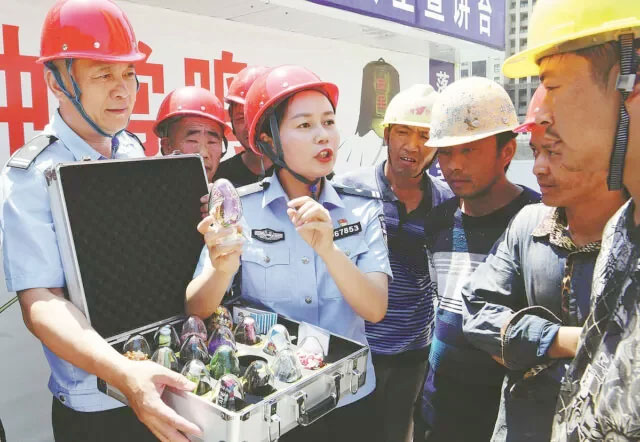China’s rapid economic growth over the past two decades has enabled it to extend its economic influence in Latin America, largely due to the absence of a counter-strategy from the USA. Initially, Washington perceived Beijing’s expanding presence as mere economic diversification and thus not a threat to hemispheric or U.S.-Latin American security and military relations.
However, more recently, the USA has started to perceive China’s commercial activities in the region as potentially detrimental, especially concerning US access to rare earth elements, allied port security, and 5G technology. Simultaneously, China’s economy has entered a period of secular decline, and the USA is actively pursuing strategies to shift its supply chain away from China.
The central question is whether Mexico City and Bogotá will align with Washington’s anti-China approach. The answer may hinge on whether the USA is willing to align its counter-narcotics efforts with the evolving strategies taking shape in Mexico and Colombia
Consequently, Mexico is becoming an attractive destination for multinational corporations seeking cost-effective manufacturing near the US market. Moreover, Colombia, which has benefited from Chinese trade and investment for years, has drawn closer to Beijing since the inauguration of President Gustavo Petro in 2022. However, it is now questioning the sustainability of this investment and foreign trade relationship, leading it to consider alternatives such as the USA.
Nevertheless, Washington’s aim is not to become an alternative sponsor but to reassert its influence by countering China. To achieve this, the USA faces challenges, with one of the major concerns being the rampant use of fentanyl. In the United States alone, overdose deaths linked to fentanyl were projected to reach nearly 110,000 in 2022 over the past eight years. The Joint Economic Committee of the United States Congress estimates that the opioid epidemic cost the US economy $1.5 trillion in 2020, and left more than 6 million people outside the labour market, according to the Council on Foreign Relations.
Although fentanyl consumption in Mexico and Colombia is less alarming, it is beginning to gain attention. However, the most immediate concern in these countries revolves around fentanyl production, insecurity, and corruption associated with drug trafficking. Due to its low production cost and synthetic nature, fentanyl production can quickly scale up.
Two Mexican cartels, Sinaloa and Jalisco Nueva Generación, dominate the fentanyl trade between the USA and Mexico. The Sinaloa cartel is even contemplating expanding operations to Colombia, including establishing fentanyl “kitchens,” sourcing supplies, and potentially infiltrating the healthcare sector for legitimate purposes.
Notably, Chinese companies supply nearly all the precursors for fentanyl manufacturing in the Western Hemisphere. Moreover, at least four Chinese companies provide information on improving fentanyl production, including sourcing ingredients, alternative ingredient recommendations, mixing instructions, and access to chemists. Some Chinese companies also use fake labels on shipments or ship chemicals without maintaining customer records. A counterfeit fentanyl pill, costing as little as 10 cents to produce, can fetch $10 on the street. Chinese criminal groups and Mexican cartels, Sinaloa and Jalisco, have combined their extensive experience in money laundering to facilitate foreign currency exchange, alongside the purchase of advanced chemicals.
In response, the US government and its allies are taking action. In February, the Biden Administration pledged cooperation with Mexico, Colombia, and Ecuador to combat the growing availability and lethality of illegal drugs containing fentanyl. In March, Mexico’s president reached out to Chinese President Xi Jinping to seek assistance in curbing fentanyl flows to North America, although Beijing denies any wrongdoing.
In April, the USA indicted four high-ranking members of the Sinaloa cartel associated with the fentanyl trade. Additionally, Mexico’s president reported that the country’s navy had intercepted a container from Qingdao, China, containing 75-pound packages with traces of fentanyl and methamphetamine in May.
The USA also imposed sanctions on seven Chinese companies and six individuals accused of exporting tablet presses to Mexico. Furthermore, the US Department of Justice recently filed criminal charges against four Chinese chemical manufacturers and eight individuals for illegal trafficking of a precursor chemical used in fentanyl production.
Despite these developments, the head of the U.S. Drug Enforcement Administration (DEA) expressed the desire for greater cooperation from Mexico. In Colombia, cocaine has become a secondary concern compared to fentanyl due to its lower lethality and profitability. Notably, the US Embassy in Bogotá announced the indefinite suspension of coca crop monitoring in Colombia and the non-presentation of its annual report on Colombia and cocaine earlier this month. The embassy cited redundancy with UN reports and the need for observation satellites for other purposes.
Nonetheless, Colombia’s Justice Minister does not anticipate this decision jeopardizing US funding for counter narcotics and other programs. Moreover, US agencies reportedly accused Colombian officials of cooperating in the arrest of Sinaloa cartel members attempting to establish the fentanyl industry in Colombia. Both the Colombian and Mexican governments agree on the necessity to revise their anti-drug strategies.
In Bogotá, the Petro administration seeks to depart from punitive, prohibitionist, and military policies and instead target speculation, money laundering, major traffickers, and criminal organizations. Describing the war on drugs as a failure, Petro emphasizes the importance of not repeating the same mistakes with fentanyl. Similarly, the Mexican government aims to prioritize economic development and reduce youth involvement in criminal organizations.
The two presidents plan to meet in early September to discuss new anti-drug strategies, focusing on youth prevention, socio-economic development, synthetic drugs, and adapting measures to changing societal needs. Many of these efforts will necessitate collaboration and cooperation with the USA, which has, until recently, been hesitant to link drug trafficking with economic development.
The central question is whether Mexico City and Bogotá will align with Washington’s anti-China approach. The answer may hinge on whether the USA is willing to align its counter-narcotics efforts with the evolving strategies taking shape in Mexico and Colombia.























